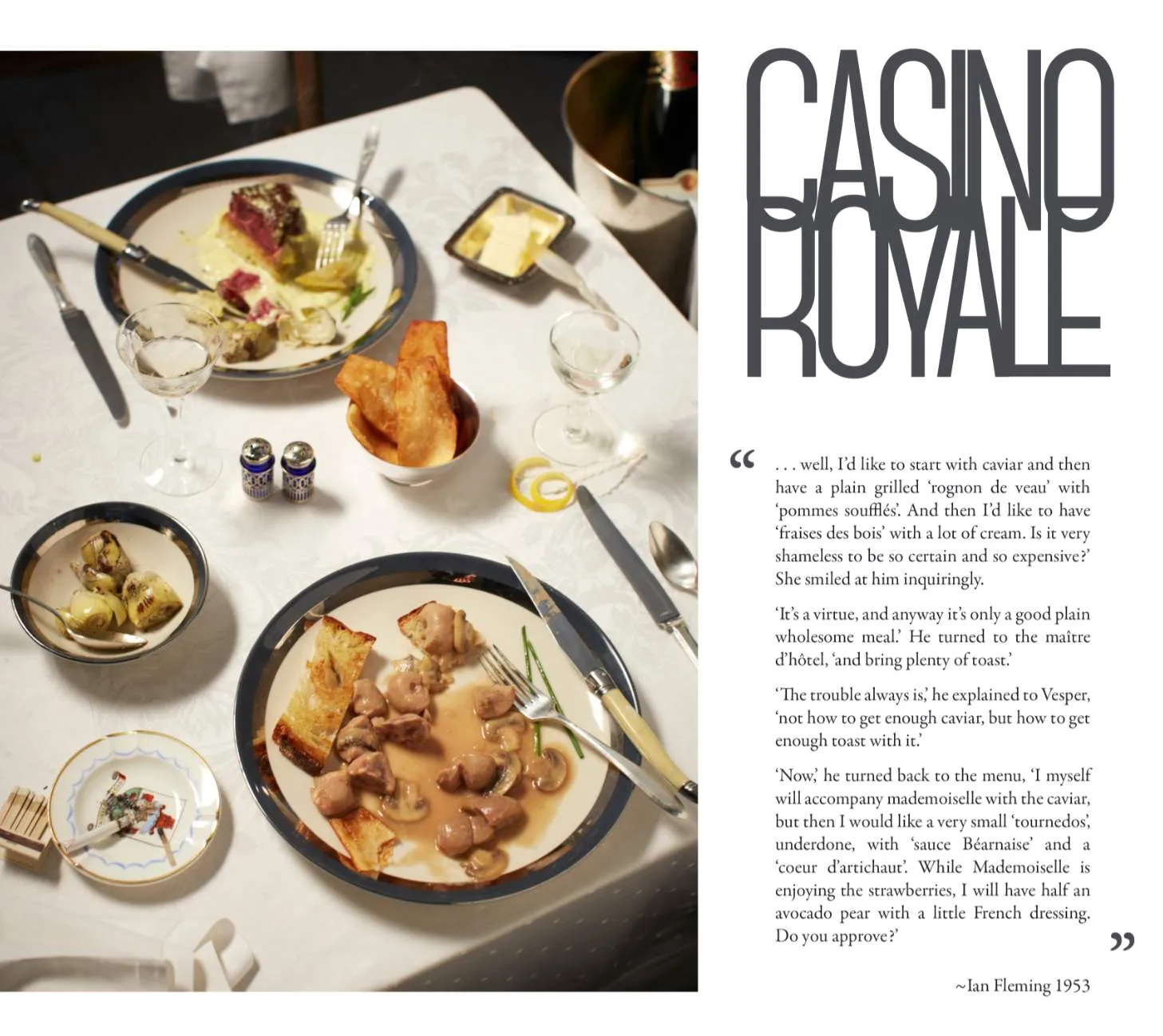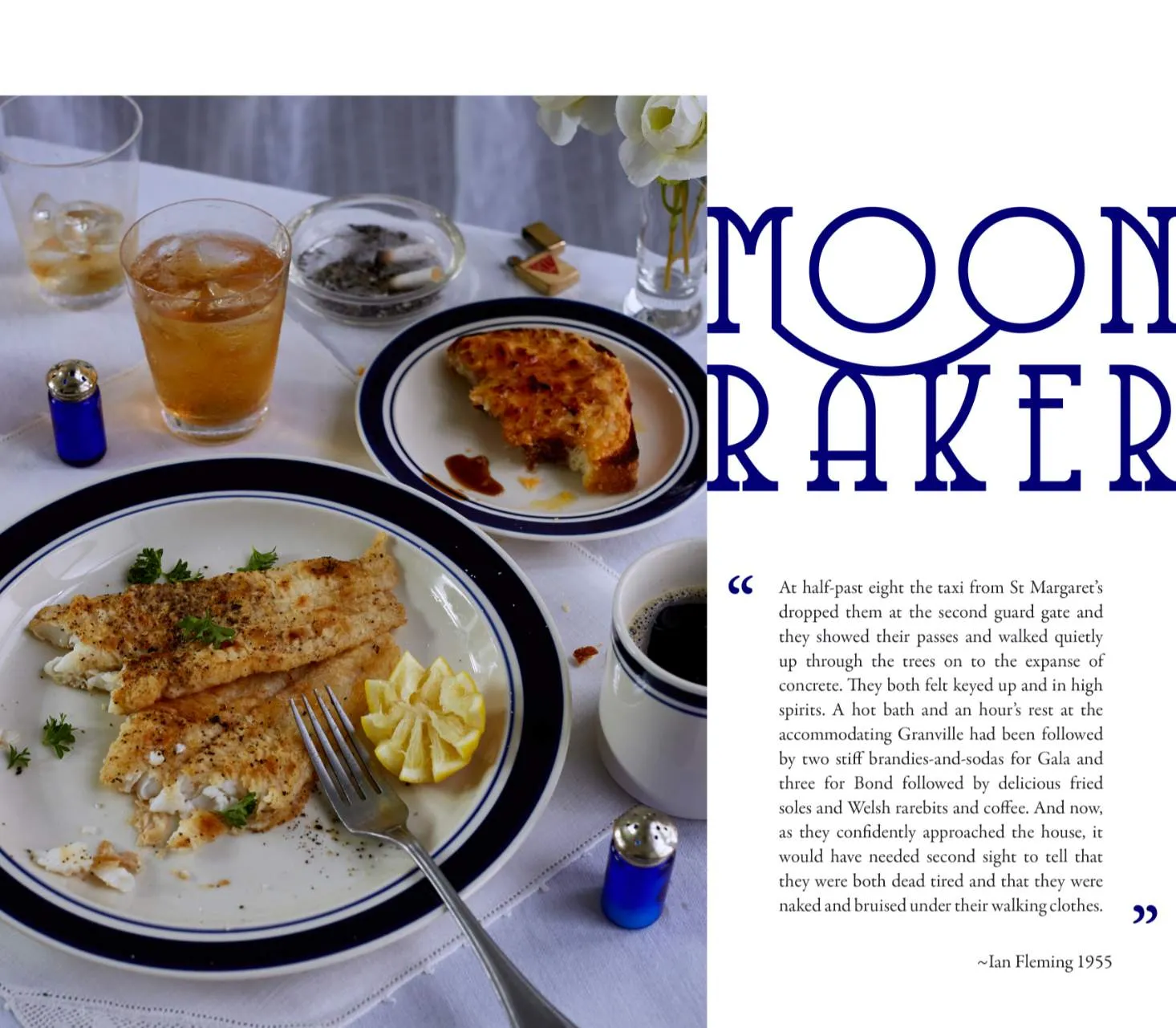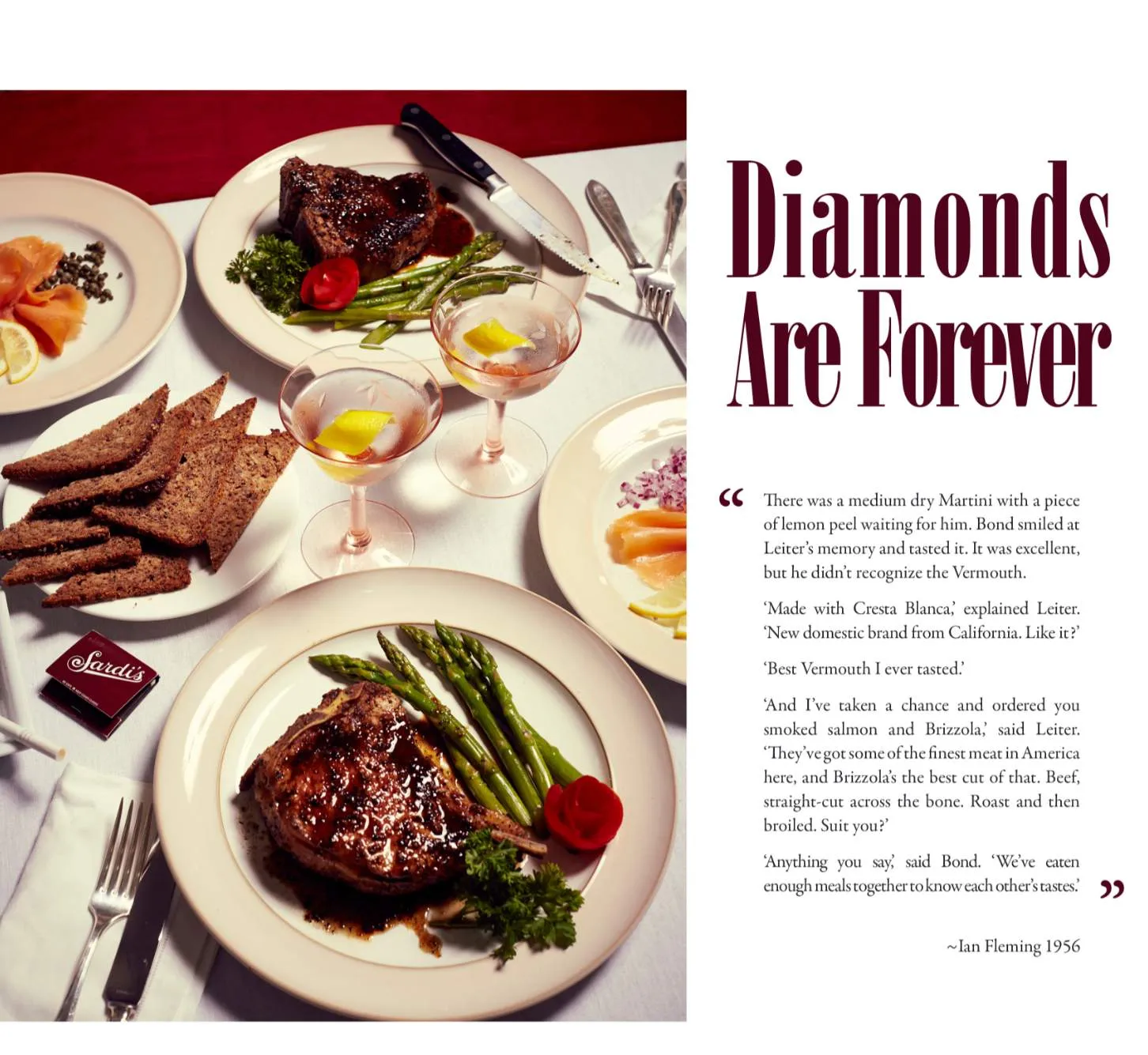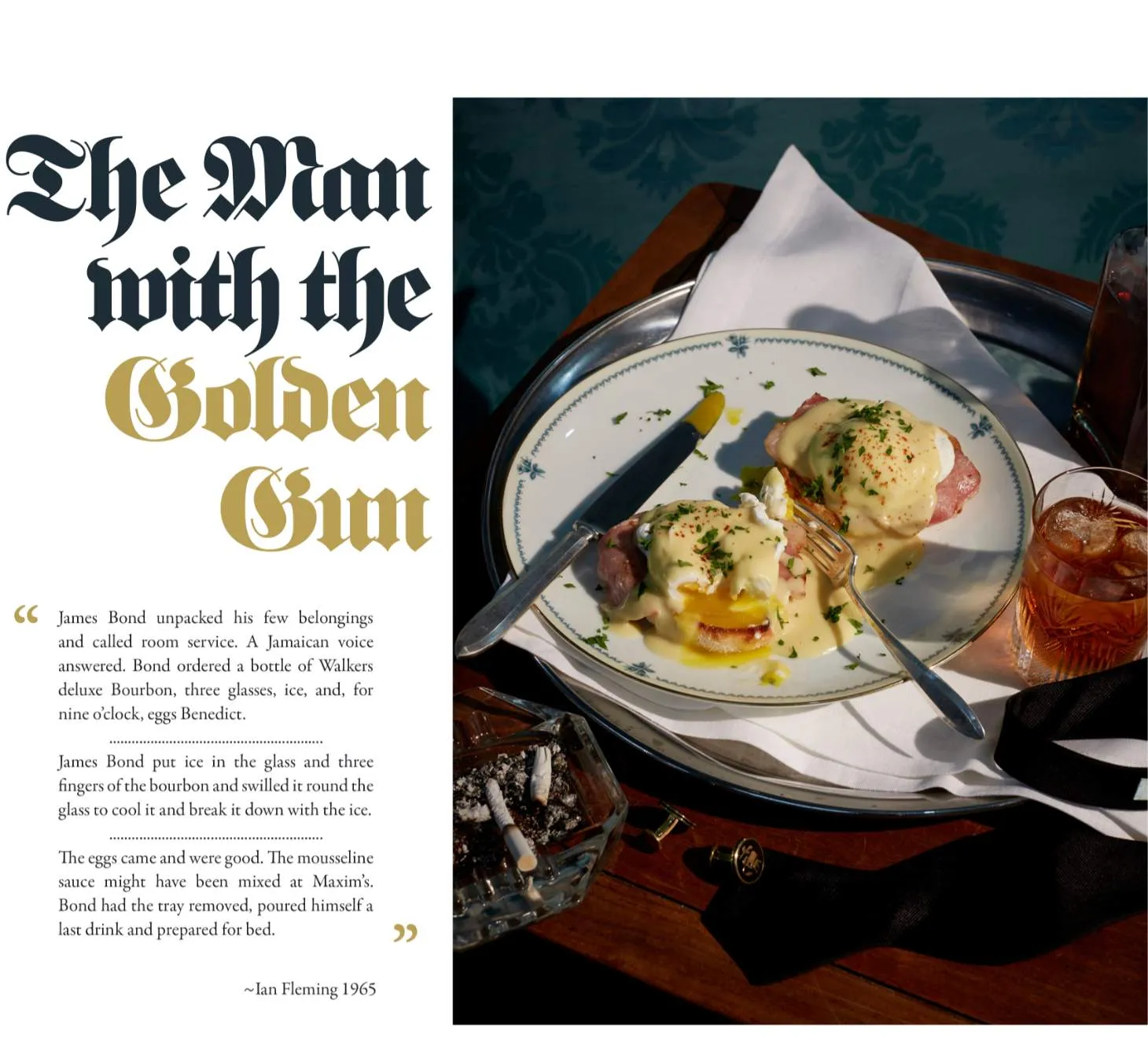Live and Let Thai: NYC Photographer Snaps 007’s Foodie Passions
Brooklyn photographer Henry Hargreaves teamed up with food artist Charlotte Omnès on a mission to recreate the tantalizing meals from James Bond's world in their intriguing photo series Dying To Eat.
Hargreaves has long been interested in espionage. His grandfather, New Zealand-born Major Charles Hargreaves, was a British SOE operative during WWII and a friend of 007 author Ian Fleming. So when Hargreaves and Omnès met during a project for the Food Network, they decided to collaborate in 2015 and delve into Fleming's novels, unveiling Bond's hidden culinary passions unexplored on the silver screen.

Casino Royale (1953)
Vivid depictions of exotic food were a form of escapism in post-WWII Britain where meat was rationed up until 1954 - a full nine years after the war had ended. Fleming’s first 007 book sets the tone for Bond’s sophisticated palate. “Well, I’d like to start with caviar and then have a plain grilled rognon de veau with pommes soufflés. And then I’d like to have fraises de bois with a lot of cream,” Bond says, turning to the Maître d'hôtel, “And bring plenty of toast.”

Live and Let Die (1954)
In the US, food rationing largely ended with the war and Americans could buy all the butter, cars, and nylons their hearts desired. There was no need for day dreaming about exquisite cuisine. Bond lives like a local whether visiting Harlem or the Deep South, dining on Little Neck Clams and Fried Chicken Maryland with bacon and sweet corn in Live & Let Die. “We have to have it," CIA officer Felix Leiter explains. “It’s the national dish.”

Moonraker (1955)
Moonraker is the only Bond novel set solely in Britain, giving Fleming an opportunity to write about England, bridge, and the luxuries of the Granville Hotel in St Margaret's Bay where Bond enjoys three stiff glasses of brandy and soda followed by fried soles and Welsh rarebit (hot cheese sauce served on toasted bread).

Diamonds Are Forever (1956)
Fueling their inspiration with Fleming’s rich descriptions, Hargreaves and Omnès meticulously recreated Bond's gastronomic indulgences. Bond savors American Brizzola beef, straight-cut across the bone, during a reunion with Leiter. The artists took advantage of props, carefully curated from antique stores, to infuse the photos with genuine ambiance - including matches from Sardi’s and cufflinks - prompting viewers to ponder the untold stories.
%20(1).webp)
From Russia, With Love (1957)
Fleming's From Russia, With Love is recreated with the Slivovica, smoked ham, and peaches Bond shares with Tatiana before vanishing back into his dark existence. The novels introduced many memorable villains including Colonel Rosa Klebb and SMERSH executioner Donovan 'Red' Grant, but unless 007 dined with the enemy there was less emphasis on his foes' tastes. “Fleming primarily concentrated on detailing Bond's experiences to immerse the reader in the character,” Omnès said.
.webp)
Dr. No (1958)
Fleming enjoyed the tranquil surroundings of his holiday home in the British colony of Jamaica - so much so it inspired the Bond series. “Would these books have been born if I had not been living in the gorgeous vacuum of a Jamaican holiday? I doubt it,” he said. Dr. No, the first of Fleming's novels to be turned into a movie in 1962, is set on the island where Bond enjoys rare steak with native vegetables and indulges in lobster.
.webp)
Goldfinger (1959)
Hargreaves and Omnès' most memorable Bond culinary experience involved preparing the stone crab paired with lusciously buttered toast featured in Goldfinger. The intricacies of its creation made it the most demanding, yet ultimately the most gratifying, meal to savor after the photo shoot.
"The brand new social experience where you activate your gaming skills as you train like a spy."
- TimeOut
Take on thrilling, high-energy espionage challenges across different game zones.


Thunderball (1961)
From Casino Royale's caviar to Thunderball’s spaghetti bolognese with chopped garlic, Hargreaves and Omnès studied Bond’s culinary journey, mirroring the resourcefulness and ingenuity of secret agents. “When not specifically chosen for him, Bond would eat according to his mood, often finding comfort in egg dishes or a hearty bowl of Bolognese, as depicted in Thunderball,” Omnès said.
.webp)
The Spy Who Loved Me (1962)
Even breakfast is an evocative experience for 007. “Despite the adventurous and extravagant foods encountered during Bond's journeys, he consistently returned to his staples of scrambled eggs, toast, and a glass of orange juice,” Omnès added.
.webp)
On Her Majesty’s Secret Service (1963)
Not all of Bond's culinary experiences are a success. He is disappointed by the chicken at a French auberge on the south bank of the Loire. Noticing the faux antiques, 007 dismisses his poularde à la crème as the only genuine antique in the restaurant.
.webp)
You Only Live Twice (1964)
Beyond mere replication, the visual feast is an immersive experience of the 007 lifestyle. The opulence of Bond's meals - in this case, Kobe beef of a grade higher than that enjoyed in Tokyo’s finest restaurants - unveils a man savoring every bite as if it were his last.

The Man With the Golden Gun (1965)
Omnès infused each setting with a touch of Bond's elusive charm, sophistication, and character. A cigarette burns next to 007’s plate, a striking detail about a man living on the edge. “Bond ordered a bottle of Walker's De Luxe Bourbon, three glasses, ice, and for the nine o’clock, eggs Benedict,” Fleming writes in The Man With the Golden Gun. “The mousseline sauce might have been mixed at Maxim’s.”
SPYSCAPE+

Join now to get True Spies episodes early and ad-free every week, plus subscriber-only Debriefs and Q&As to bring you closer to your favorite spies and stories from the show. You’ll also get our exclusive series The Razumov Files and The Great James Bond Car Robbery!


Gadgets & Gifts
Explore a world of secrets together. Navigate through interactive exhibits and missions to discover your spy roles.
Your Spy Skills
We all have valuable spy skills - your mission is to discover yours. See if you have what it takes to be a secret agent, with our authentic spy skills evaluation* developed by a former Head of Training at British Intelligence. It's FREE so share & compare with friends now!
* Find more information about the scientific methods behind the evaluation here.


Stay Connected
Follow us for the latest
TIKTOK
INSTAGRAM
X
FACEBOOK
YOUTUBE